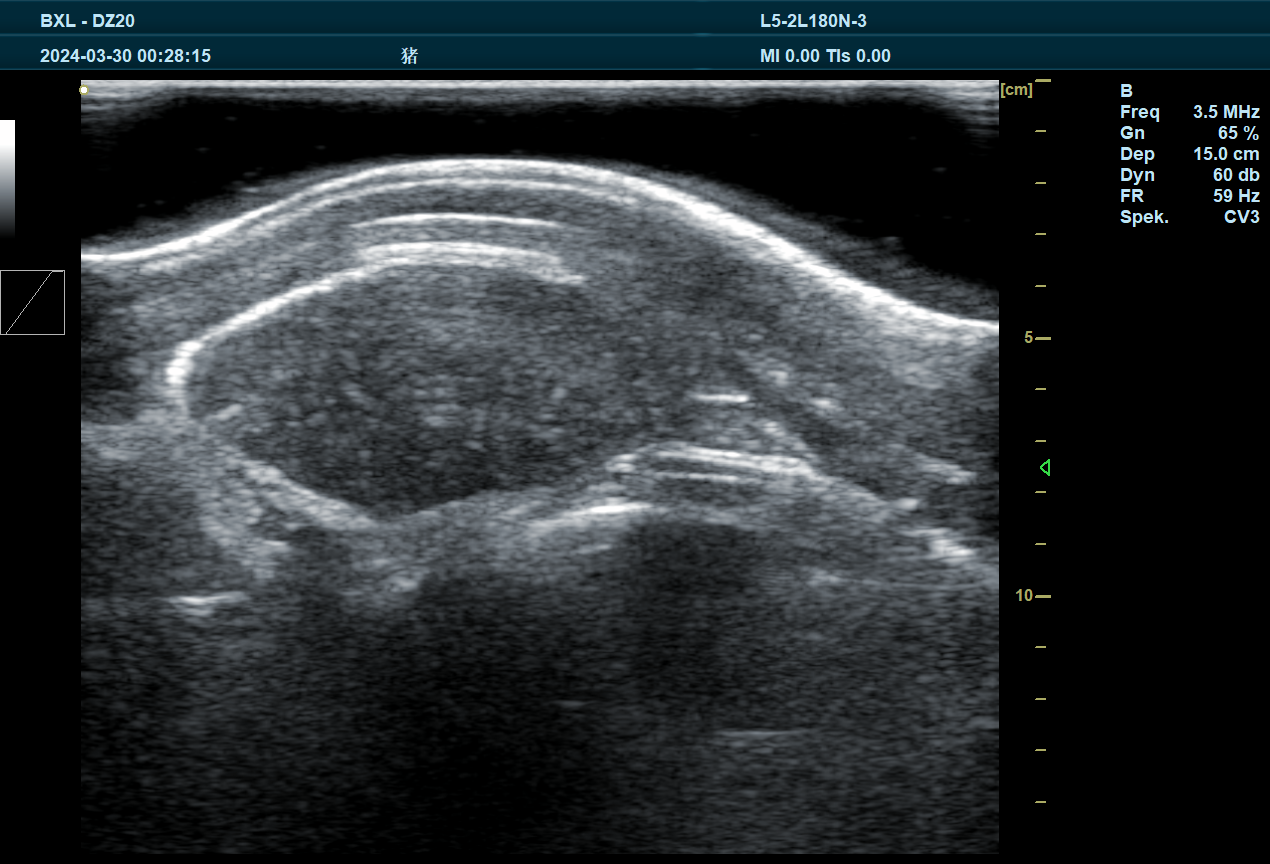The original unprocessed veterinary B-ultrasound image has average clarity, and the overall color and brightness are not very good. It's a bit dark, especially the extraction effect of the center and edge of the nodule that we need to highlight is not very good.
After research, it was found that these six enhancement methods can enhance the quality of veterinary B-ultrasound images to a certain extent. Among them, the gray-scale fuzzy enhancement method is particularly effective in controlling the overall brightness of veterinary B-ultrasound images, making the veterinary B-ultrasound images more effective. It seems to have a brighter but non-distorted effect, and the center and edge of the nodule that need to be highlighted have been significantly enhanced, making it look clearer than the original image.

Because the effect of traditional blur enhancement relies more on the selection of thresholds. Therefore, an automatic threshold selection algorithm is added to make this method more perfect. It has good smoothness and selectivity, and its calculation amount is not large and does not take long. It is a relatively feasible image enhancement method. Moreover, after adding the automatic threshold selection algorithm, the two are effectively combined to automatically select the best threshold for enhancement of different veterinary B-ultrasound images, thereby effectively enhancing the outstanding features of veterinary B-ultrasound images. part. It has been verified through experiments that the grayscale-based fuzzy enhancement method after adding the automatic threshold selection algorithm can adapt to veterinary B-ultrasound image processing under different veterinary diagnosis needs. The image quality after enhancement by this method has been significantly improved, making all The area of the lesion that needs to be highlighted is obviously enhanced. This method is feasible and effective in processing veterinary B-ultrasound images.








